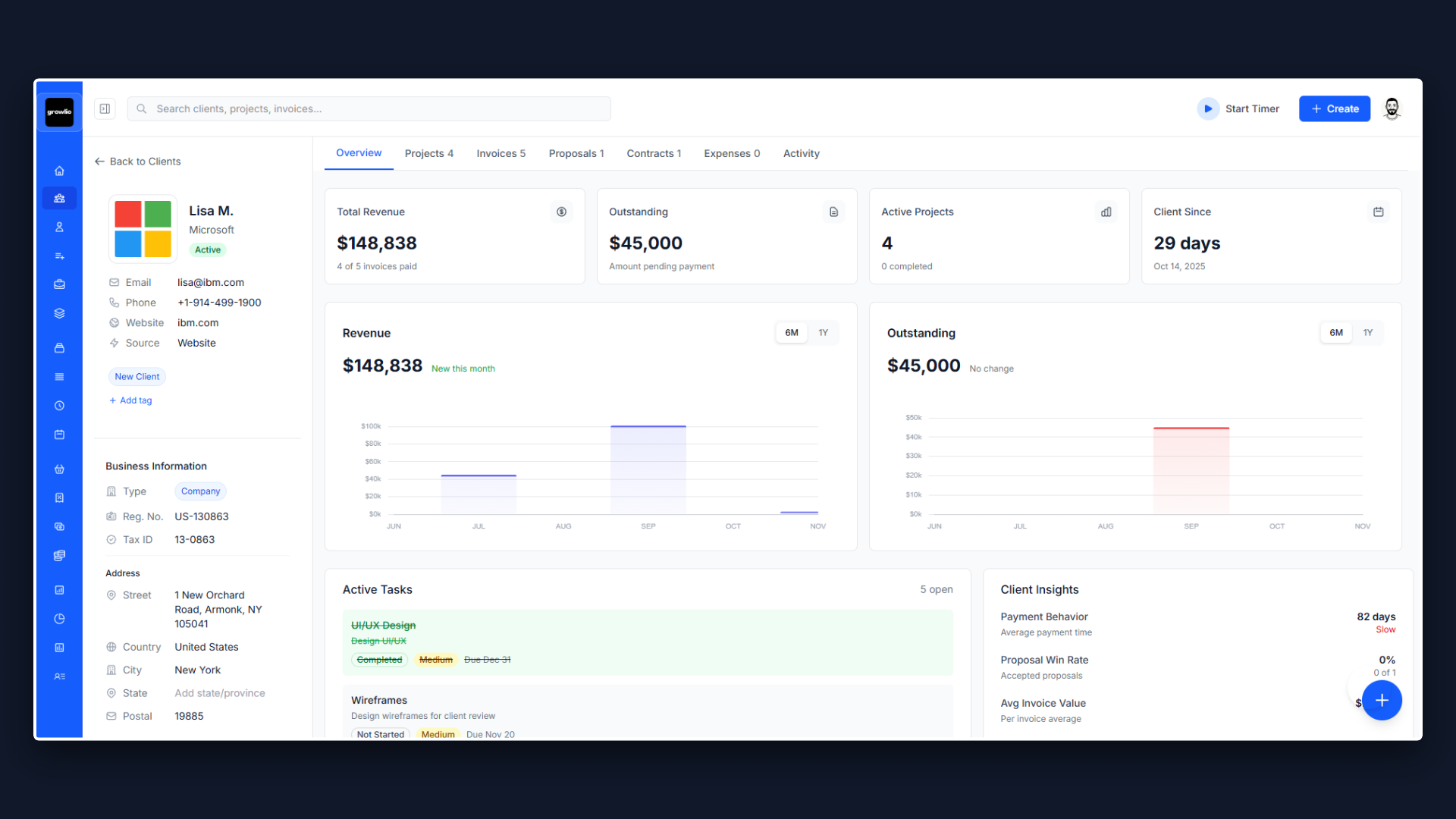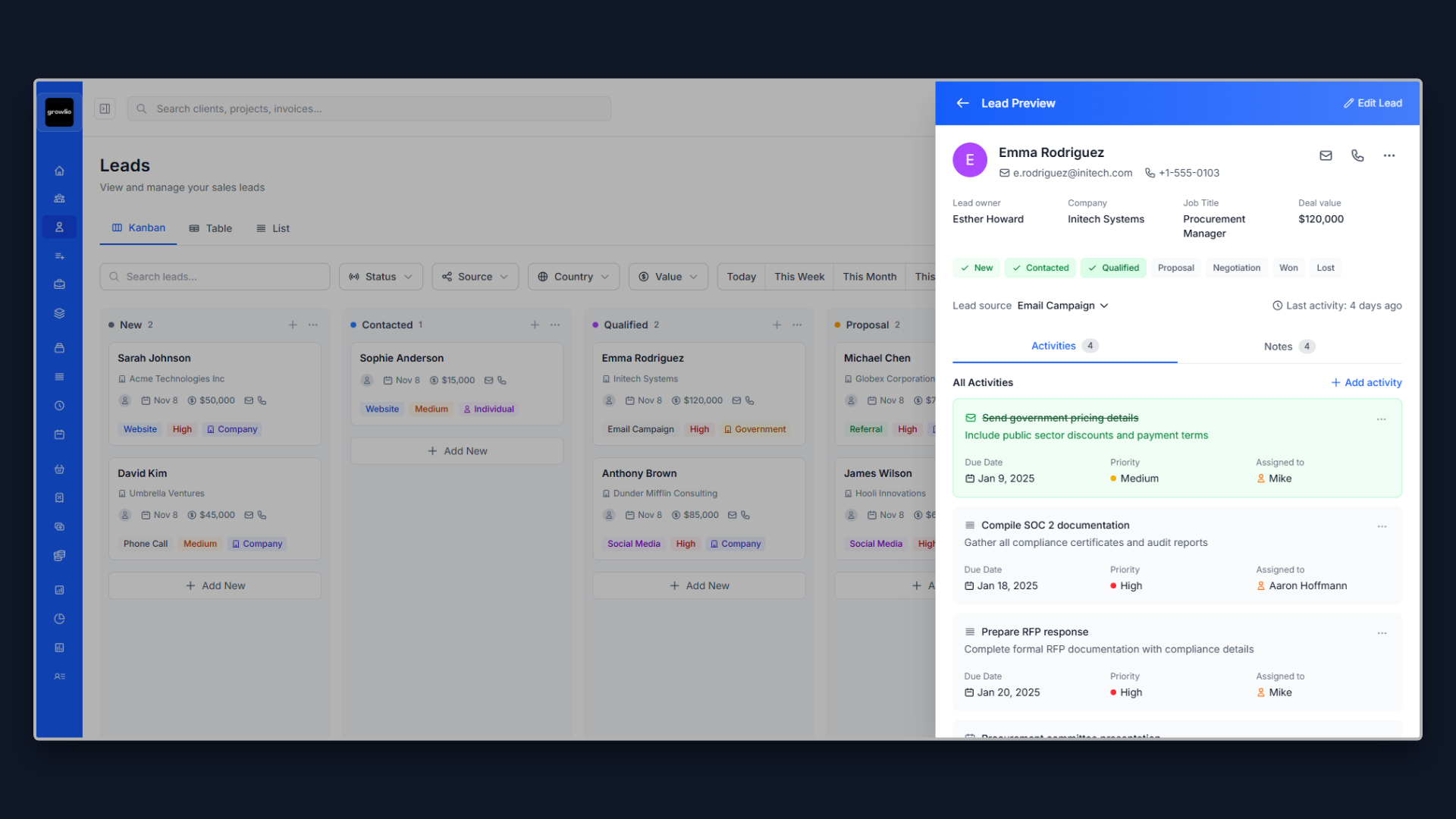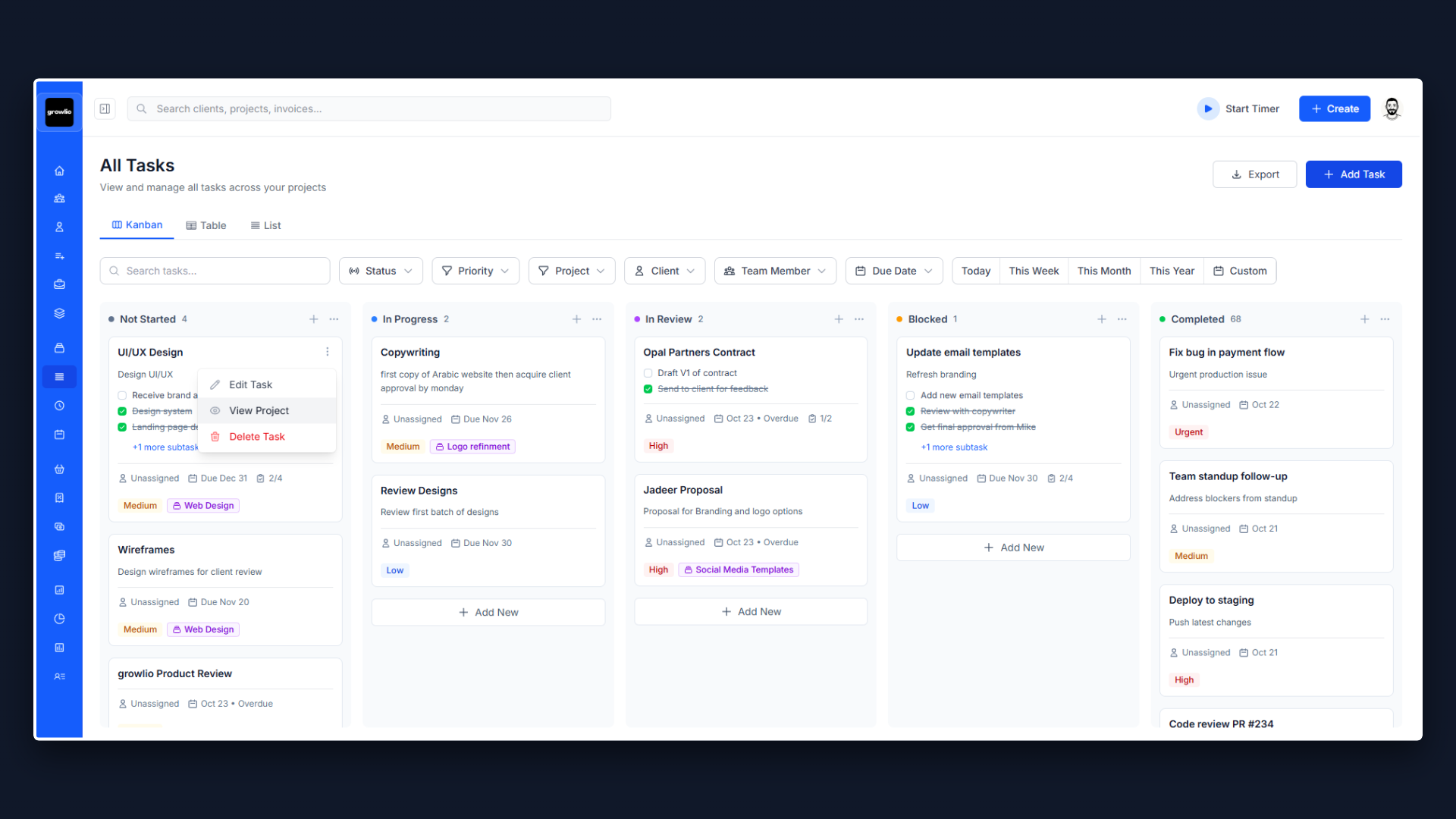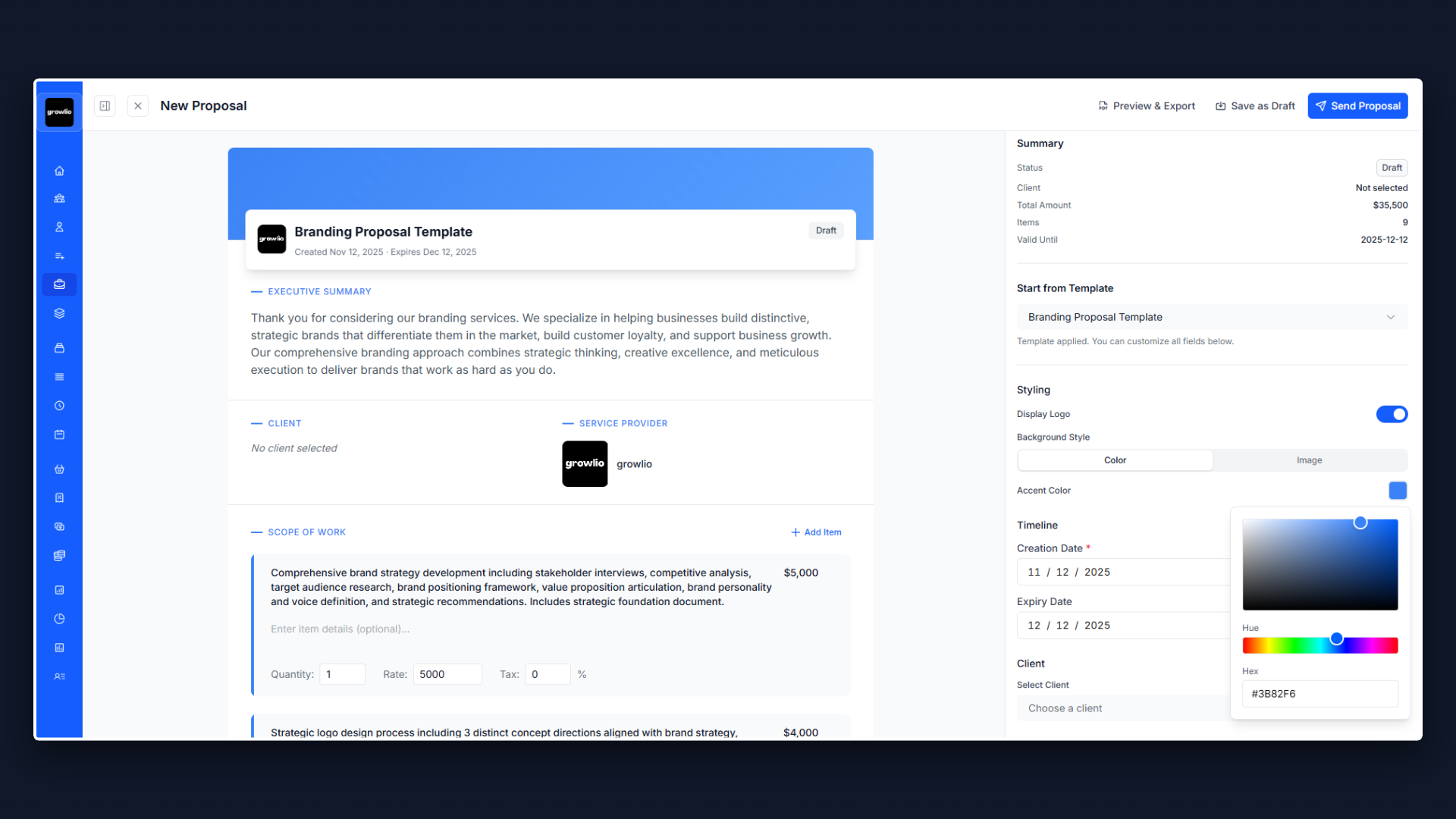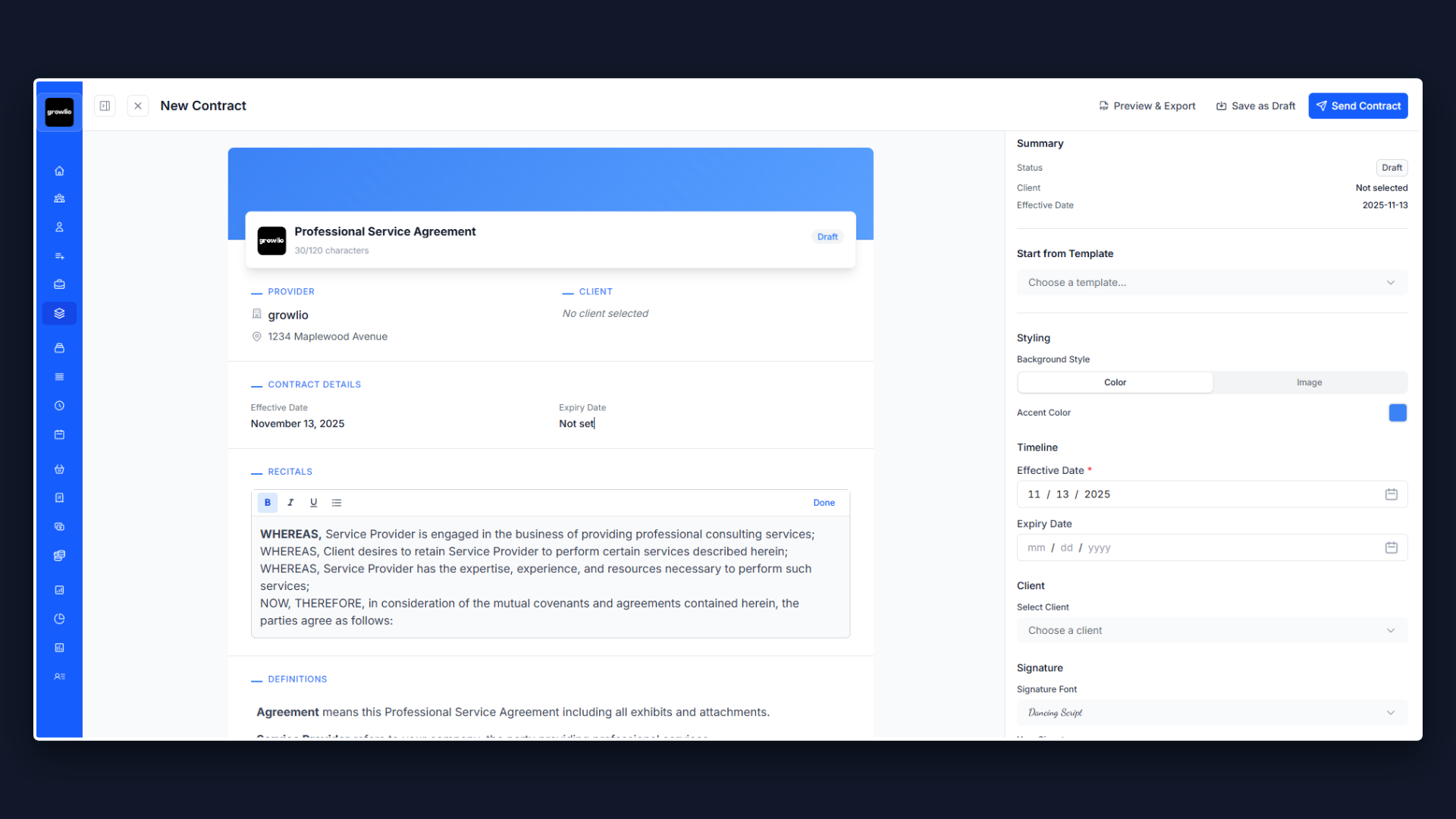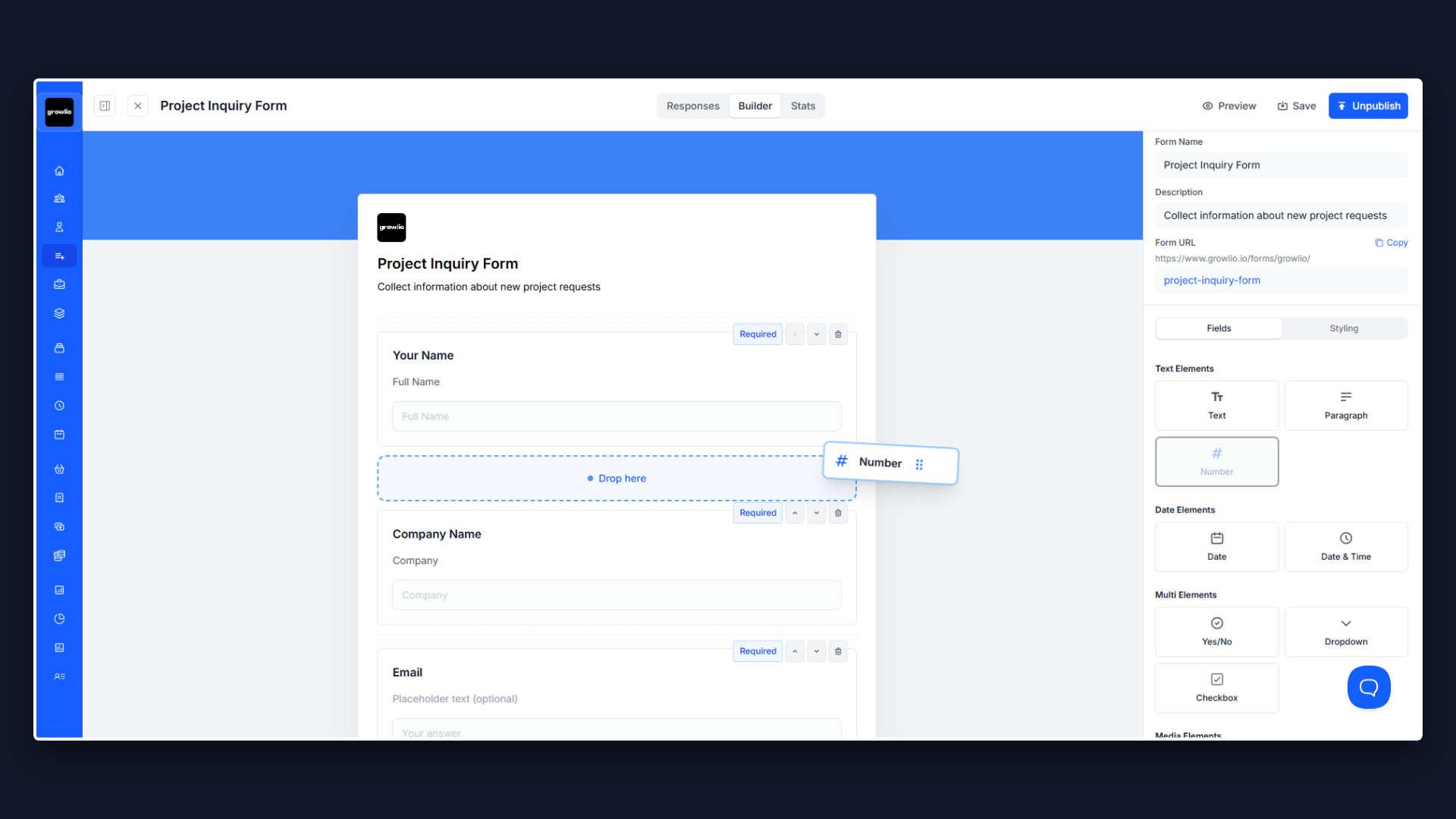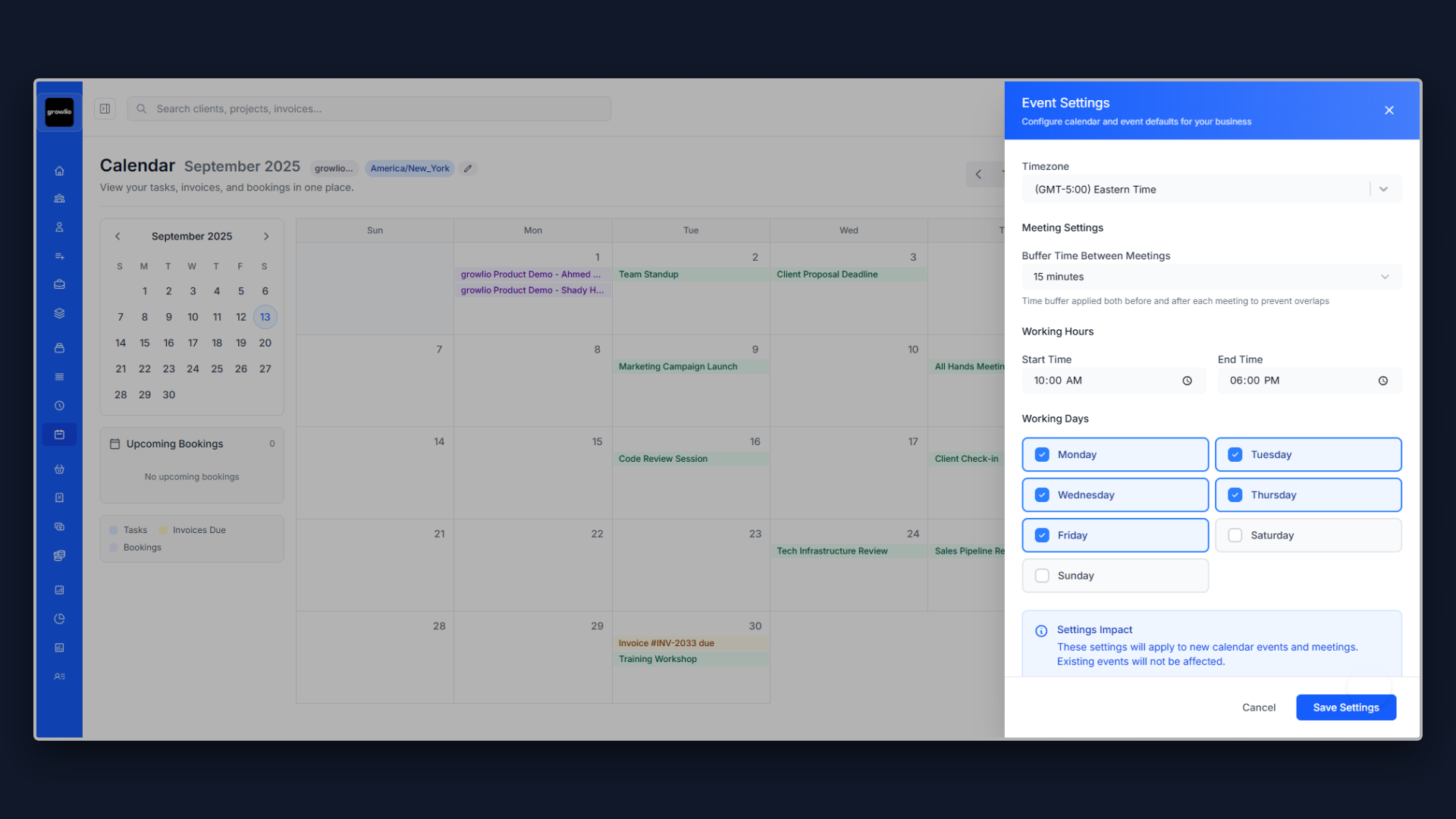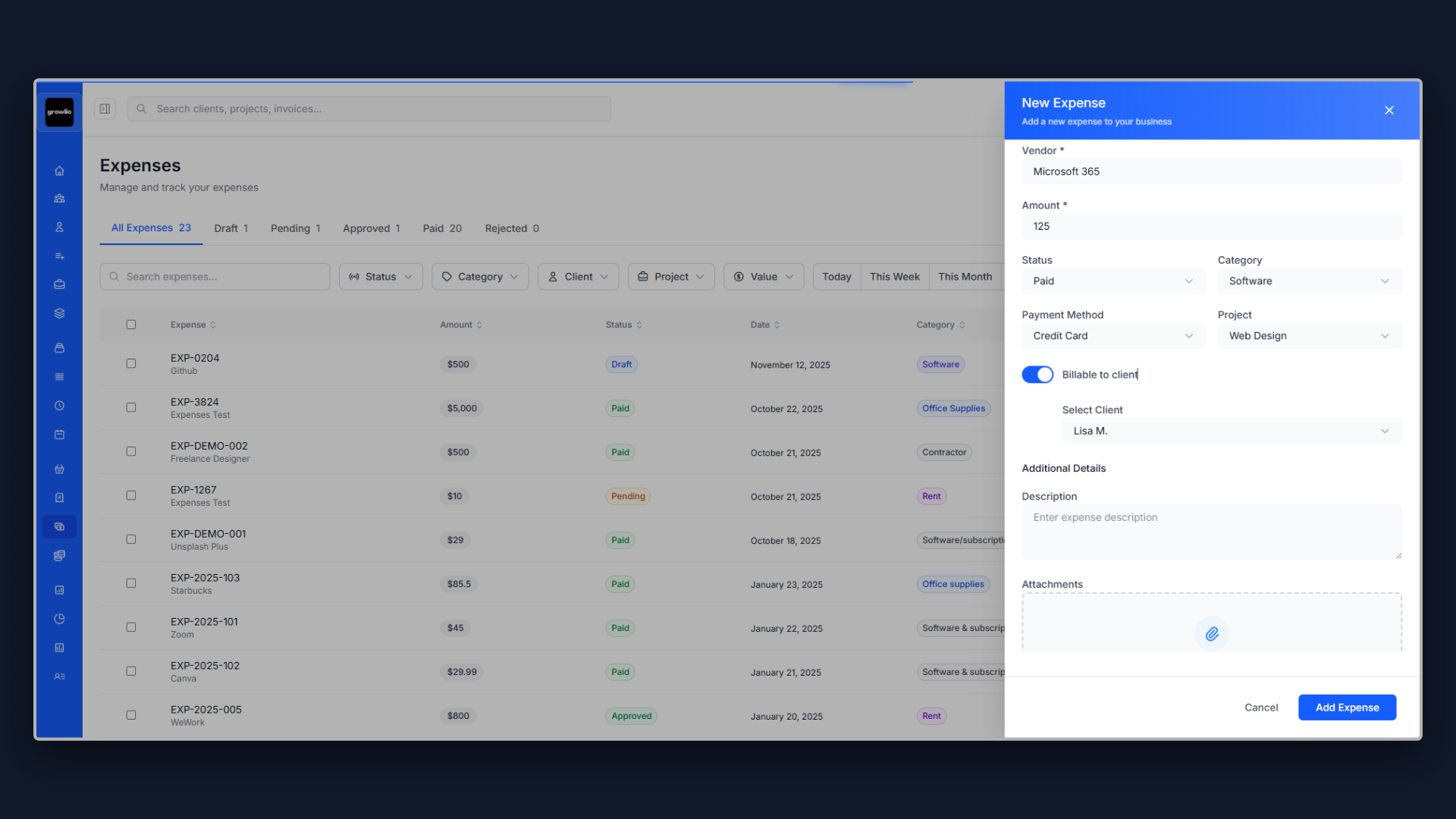Why Your Event Planning Proposal Is Your First Impression
In the event planning industry, you're not just selling services—you're selling trust, creativity, and peace of mind. Your proposal is often the first tangible demonstration of your organizational skills, attention to detail, and design aesthetic. If your proposal is disorganized, vague, or visually unappealing, clients will assume your events will be too.
The event planning industry generates over $5 billion annually in the U.S. alone, with corporate events, weddings, and social celebrations driving demand. Yet the difference between event planners charging $2,000 and those commanding $20,000+ for similar events often comes down to how they present themselves in proposals.
Your proposal needs to accomplish several things simultaneously: demonstrate you understand their vision, prove you can execute flawlessly, showcase your creativity and style, address their concerns about budget and timeline, and make them feel confident choosing you over competitors. This is no small task, but with the right structure, your proposals can become your most powerful sales tool.
1. Lead With Their Vision, Not Your Credentials
The biggest mistake event planners make is starting with "About Us" sections listing years of experience and awards won. Your prospect doesn't care about you yet—they care about their event.
Start by reflecting their vision back to them in vivid detail. If they're planning a corporate product launch, open with: "You're launching a product that will transform your industry. This isn't just another company event—it's the moment your team has been working toward for months. Your launch event needs to create buzz, impress investors, energize your team, and position your brand as an industry leader. We understand that everything—from the venue atmosphere to the closing moments—must reinforce your message of innovation and excellence."
This approach immediately shows you listened during your consultation and understand what's at stake. You're not just planning an event; you're helping them achieve specific business or personal goals. Now they're ready to hear how you'll make it happen.
2. Include a Preliminary Event Concept
Nothing differentiates you faster than showing up with ideas. Include a brief event concept section in your proposal that demonstrates your creativity and understanding of their needs.
For example: Event Theme & Aesthetic: Modern elegance with technology-forward elements. Clean lines, bold brand colors, interactive product displays, ambient lighting that shifts throughout the event to maintain energy.
Guest Experience Flow: Arrival: Welcome cocktails with signature branded drinks, interactive photo moment with product display. Main Event: Seated dinner with live chef stations, product reveal with dramatic lighting and AV presentation, keynote from CEO with inspiring vision, live demonstration of product features. Closing: Networking reception with dessert bar, branded swag bags, valet dismissal.
Key Moments: Product reveal synchronized with lighting, music, and visual effects to create memorable "wow" moment. Interactive stations where guests can experience the product firsthand. Social media moments throughout encouraging hashtag usage and organic content creation.
This preliminary concept proves you're already thinking creatively about their event. It's not a final plan—just enough to show you "get it" and have the vision to bring their ideas to life.
3. Break Down Your Services Into Clear Categories
Event planning encompasses dozens of tasks. Break your services into clear categories so clients understand exactly what you'll handle.
Planning & Design: Initial consultation and vision development, detailed event timeline and production schedule, floor plan and layout design, color scheme and aesthetic curation, vendor research and recommendations, budget development and tracking.
Venue & Logistics: Venue research and site visits, contract negotiation and review, floor plan optimization, permitting and insurance coordination, parking and transportation planning, accessibility accommodations.
Vendor Management: Sourcing and vetting vendors (catering, AV, florals, entertainment), contract review and management, day-of vendor coordination, setup supervision and quality control, final payment processing and reconciliation.
Guest Experience: Invitation design and management, RSVP tracking and guest communication, seating arrangements and name cards, registration or check-in process, guest hospitality and VIP coordination, post-event thank you communications.
Day-of Coordination: Complete event timeline and run-of-show, on-site team management, vendor arrival and setup supervision, timeline execution and adjustments, problem solving and real-time decisions, breakdown supervision.
This breakdown helps clients see the enormous scope of work involved and justifies your pricing. Many clients underestimate what event planning entails until they see it laid out comprehensively.
4. Present a Detailed Timeline That Reduces Anxiety
Event planning anxiety often stems from not knowing what happens when. A detailed timeline in your proposal immediately reduces stress and builds confidence.
Structure it by time periods leading up to the event:
6-12 Months Before (Planning Phase): Finalize event vision and objectives, establish budget and allocate by category, secure venue and negotiate contract, begin vendor research for catering, AV, florals, develop initial guest list and save-the-date strategy.
4-6 Months Before (Design & Booking Phase): Finalize event theme and design aesthetic, book all major vendors (catering, entertainment, AV), design and order invitations, create detailed floor plan and seating strategy, establish event website or registration system, finalize menu selections and tastings.
2-3 Months Before (Details Phase): Send invitations and track RSVPs, create run-of-show and minute-by-minute timeline, finalize all vendor contracts and payments, design signage, programs, and printed materials, confirm transportation and accommodation blocks, conduct venue walk-through.
1 Month Before (Finalization Phase): Final guest count and seating chart, confirm all vendor arrival times and needs, final venue walk-through with key vendors, create day-of emergency contact list, prepare vendor payment schedule, final timeline review with client.
1 Week Before (Final Preparations): Final vendor confirmations, distribute run-of-show to all parties, pack emergency kit and supplies, final review with client, conduct rehearsal if applicable.
Event Day: Arrive early for vendor coordination, manage setup and soundchecks, execute timeline, handle real-time adjustments, supervise breakdown.
This timeline transforms an overwhelming process into a manageable roadmap. Clients can see exactly when their involvement is needed and when you're handling things behind the scenes.
5. Address Budget Transparently With Detailed Breakdowns
Budget anxiety is real for event clients. Some fear being overcharged; others worry about unexpected costs. Transparent budget breakdowns build trust and reduce surprises.
Present your budget in clear categories with ranges or estimates:
Venue & Catering (typically 40-50% of budget): Venue rental: $3,000-$8,000 depending on date and guest count. Catering (100 guests): $8,000-$15,000 depending on menu complexity. Bar service: $2,000-$5,000 depending on open vs. hosted bar. Service staff and gratuity: typically 20-22% of food/beverage total.
Design & Decor (typically 10-15% of budget): Floral arrangements and centerpieces: $2,000-$5,000. Linens, china, and specialty rentals: $1,500-$3,000. Lighting and ambiance: $1,000-$3,000. Signage and printed materials: $500-$1,500.
Entertainment & AV (typically 10-15% of budget): Live band or DJ: $2,000-$8,000. Sound system and microphones: $1,000-$2,500. Projection and screens for presentations: $1,500-$4,000. Photographer/videographer: $2,000-$6,000.
Event Planning Services (typically 10-15% of budget): Planning and design services: $5,000-$12,000. Day-of coordination: included in planning fee. Vendor management and contract review: included.
Miscellaneous (typically 5-10% of budget): Invitations and postage: $500-$1,500. Guest favors or swag: $1,000-$3,000. Transportation or valet: $800-$2,000. Contingency fund (10% recommended): $3,000-$5,000.
This transparency helps clients understand where their money goes and sets realistic expectations. It also positions you as a trusted advisor, not just a vendor.
6. Showcase Your Vendor Network as a Value Proposition
Your vendor relationships are one of your biggest assets. Highlight them as a key benefit of working with you.
Explain: "Over [X] years of event planning, we've built relationships with the best vendors in the industry. This network provides you with several advantages: preferred pricing and priority booking (vendors give our clients better rates and availability), pre-vetted quality (we only work with vendors who consistently deliver excellence), streamlined communication (we handle all coordination so you don't manage multiple vendors), and problem-solving partnerships (our vendors go above and beyond for our clients because of our established relationships)."
Consider including a "Preferred Vendor List" showing categories like catering companies you work with, AV and production partners, florists and designers, photographers and videographers, entertainment options (bands, DJs, specialty acts), and rental companies for furniture, linens, and equipment.
This demonstrates you're bringing more than just planning skills—you're bringing an entire ecosystem of trusted professionals.
7. Include Contingency Planning and Risk Management
Events involve risk—weather, vendor no-shows, technical failures, illness. Clients worry about what happens when things go wrong. Address this proactively in your proposal.
Explain your contingency planning approach: Weather Backup Plans: For outdoor events, we always secure indoor backup space or tent rentals with clear decision timeline 48 hours before the event.
Vendor Backup Plans: Every vendor contract includes backup provider clause. We maintain relationships with backup vendors in every category who can step in if needed.
Technical Redundancy: For critical AV needs (presentations, microphones), we ensure backup equipment is always on-site.
Day-of Emergency Resources: We arrive with a comprehensive emergency kit including sewing supplies, stain removers, tape, scissors, phone chargers, pain relievers, and other essentials. We maintain an on-call relationship with additional staff who can arrive within 30 minutes if needed.
Insurance & Liability: We carry $2M general liability insurance and require the same from all vendors. We review all venue and vendor insurance requirements to ensure compliance.
This level of preparation reassures clients that you've thought through worst-case scenarios and have plans in place. It's the difference between experienced planners and amateurs.
8. Demonstrate Your Process With Past Event Examples
While you can't share photos of every client event due to privacy, you can demonstrate your capabilities through case studies or examples.
Format them concisely: Corporate Product Launch - Tech Company
Event Type: 200-person evening event with product reveal
Challenge: Create buzz-worthy launch that would generate social media coverage and impress investors
Our Solution: Transformed industrial warehouse with dramatic lighting, created Instagram-worthy moments throughout venue, coordinated surprise celebrity appearance, managed live-streaming for remote attendees
Results: Event trending on Twitter during and after, 50+ media mentions, client reported exceeding investor engagement goals
Nonprofit Fundraising Gala
Event Type: 300-person seated dinner and auction
Challenge: Raise $500K while staying within tight budget, coordinate complex auction logistics
Our Solution: Negotiated venue and catering discounts, recruited sponsor underwriting for major costs, implemented mobile bidding technology, created emotional video presentation
Results: Raised $625K (25% over goal), 95% of attendees rated event "excellent," booked for following year before event ended
Even 2-3 examples demonstrate your range and prove you can deliver results under various conditions and constraints.
9. Define Communication and Collaboration Expectations
Event planning requires ongoing collaboration. Set clear expectations about communication frequency and methods to avoid frustration later.
Explain your communication structure: Planning Phase: Bi-weekly planning calls (30-60 minutes) to review progress and make decisions. Email check-ins between calls as needed. Shared planning portal where you can review timelines, budgets, and documents 24/7.
Month Before Event: Weekly calls to finalize details and address any concerns. 24-hour email response time for urgent questions. Final walk-through scheduled 2-3 weeks before event.
Week of Event: Daily check-ins to confirm final details. Direct phone access for urgent matters. Final timeline review 48 hours before event.
Event Day: On-site presence from setup through breakdown. Direct phone/text access throughout event. Post-event debrief within one week to review successes and gather feedback.
This structure reassures clients they won't be left in the dark while also setting boundaries around your availability.
10. Make the Decision Easy With Clear Next Steps
Don't leave your prospect wondering what happens if they want to move forward. End with crystal-clear next steps.
"Ready to start planning an unforgettable event? Here's what happens next:
Step 1: Review this proposal and let us know if you have any questions or would like to discuss any modifications. We're happy to adjust services or budget to fit your needs.
Step 2: Sign the agreement and submit the retainer (typically 25-50% of planning fee) to secure your date on our calendar. We limit the number of events we take on each month to ensure every client receives exceptional service.
Step 3: We'll schedule your kickoff call within 48 hours to begin the planning process, review timelines, and discuss your vision in detail.
Step 4: We'll send you access to your personalized planning portal where you can track progress, review documents, and collaborate with our team throughout the planning process.
Questions before you're ready to commit? Schedule a call with me at [calendar link] or reply to this email. I'm here to make this process as easy and stress-free as possible."
This removes all friction and makes saying "yes" simple and straightforward.
Final Thoughts on Event Planning Proposals
Your proposal is more than a price quote—it's a demonstration of how you think, plan, and execute. It's proof that you can take their vision and make it reality. The planners who win the most clients aren't necessarily the most experienced; they're the ones who make clients feel understood, confident, and excited.
Every proposal should be customized for the specific client and event. Reference their specific vision, venue considerations, and goals. Include preliminary creative concepts that show you're already thinking about their event. Demonstrate your planning process through detailed timelines and vendor management strategies. Address their concerns about budget, contingencies, and communication proactively. And make it easy to say yes with clear next steps.
Remember: a great event planning proposal proves you understand their vision, demonstrates you have the expertise and resources to execute flawlessly, reduces their anxiety about the complex planning process, and makes the investment feel worthwhile. Get these elements right, and you'll book more events—even against more established competitors.
